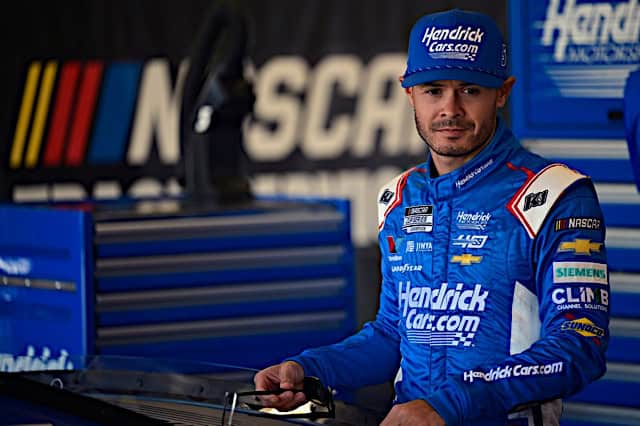### Kyle Larson Expresses Regret Over “Hugging the Barrier” Move
NASCAR driver Kyle Larson has been making headlines after openly expressing regret over a daring maneuver he executed during a recent race, often referred to as “hugging the barrier.” This move, while thrilling to spectators and showcasing Larson’s fearless driving style, has sparked considerable debate within the racing community regarding its risks and implications.
#### The Controversial Move
The incident in question occurred during a high-stakes race where Larson, in a bid to gain an advantage, steered his car perilously close to the track’s outer wall, a tactic known as “hugging the barrier.” This move is designed to maximize speed by utilizing the momentum from the wall, but it comes with significant risk. While it can shave precious milliseconds off lap times, it also puts the car in a precarious position, with little room for error.
Larson’s execution of this maneuver was both impressive and nerve-wracking, drawing gasps from the audience and praise from some racing enthusiasts for his boldness and skill. However, the aftermath of the move has led Larson to reconsider its appropriateness and safety.
#### Larson’s Reflection and Regret
In a candid interview, Larson shared his thoughts on the move, admitting that in hindsight, he regretted taking such a risk. “At the moment, it felt like the right decision to make,” Larson explained. “But looking back, I realize the potential consequences were far greater than any advantage I might have gained.”
Larson’s regret is rooted in the inherent dangers of “hugging the barrier.” The proximity to the wall leaves virtually no margin for error; a slight miscalculation can lead to a catastrophic crash, endangering not only the driver but also other competitors on the track. Larson acknowledged this risk, expressing concern for the safety of his fellow drivers and the potential for causing a multi-car incident.
#### The Impact on Racing Strategy
Larson’s admission has ignited discussions among drivers, teams, and fans about the ethics and strategies in NASCAR racing. The move, while legal, raises questions about the balance between aggressive driving and safety. Some argue that such tactics are part of the sport’s thrill and competitive edge, while others believe that they push the boundaries of acceptable risk.
Veteran drivers and analysts have weighed in on the debate, with some praising Larson’s honesty and others cautioning against glorifying dangerous maneuvers. “It’s a fine line we walk in this sport,” said one seasoned driver. “Pushing the limits is part of racing, but we have to remember the stakes involved.”
#### NASCAR’s Perspective
NASCAR officials have also taken note of Larson’s remarks. The governing body of the sport has consistently emphasized safety and has implemented numerous measures over the years to protect drivers. Larson’s comments could potentially influence future regulations or guidelines regarding high-risk maneuvers.
In response to the incident, NASCAR released a statement underscoring their commitment to driver safety. “We appreciate Kyle Larson’s reflection on the matter and will continue to evaluate our safety protocols to ensure the well-being of all competitors,” the statement read.
#### Moving Forward
Kyle Larson’s regret over the “hugging the barrier” move serves as a poignant reminder of the fine line between daring and danger in motorsports. As one of NASCAR’s most talented drivers, his candidness about the incident highlights the ongoing dialogue within the sport about how to balance competitive edge with safety.
Larson has vowed to learn from this experience and to approach future races with a heightened awareness of the risks involved. “I love this sport and the thrill of racing, but nothing is more important than the safety of everyone on the track,” he stated. “I’ll continue to push myself to be the best driver I can be, but with a renewed respect for the boundaries we must respect.”
As the NASCAR season progresses, Larson’s reflection may well influence other drivers to consider the long-term implications of their split-second decisions, ultimately contributing to a safer and more strategic approach to racing.
